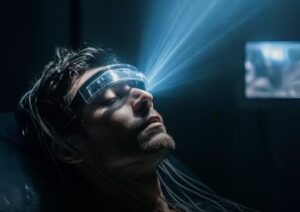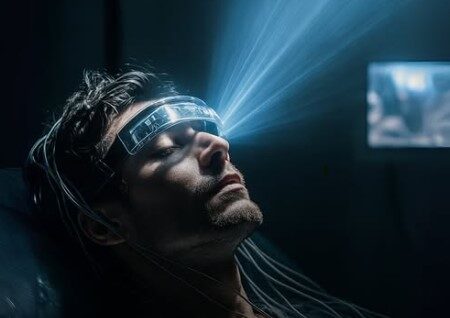AI-Powered Headset Reconstructs Human Dreams, Opening New Frontiers in Neuroscience
In a development that blurs the line between science fiction and reality, researchers have introduced a breakthrough device capable of capturing and replaying human dreams. Using advanced artificial intelligence in combination with functional magnetic resonance imaging (fMRI), this experimental headset can decode and reconstruct visual content from the human mind during sleep.

The research, conducted by a team of neuroscientists and engineers, represents one of the most significant advancements in understanding the human subconscious. By analyzing brain activity in real-time, the system interprets and visualizes the imagery formed during the dreaming phase—particularly during rapid eye movement (REM) sleep, when dreams are most vivid.
At the heart of the innovation is a neural decoding algorithm trained on hours of fMRI data. Participants in early trials were shown various images while researchers simultaneously recorded patterns of brain activity. These patterns were then linked to visual content using machine learning. When the same participants later entered dream states, the AI system compared live fMRI data with the previously learned patterns to reconstruct likely visuals—producing recognizable, albeit imperfect, representations of their dreams.
The reconstructed images reveal abstract and sometimes detailed glimpses of dream sequences, providing a fascinating peek into the inner workings of the sleeping brain. For neuroscientists, this represents not just a technological feat, but a new research window into consciousness, memory, and cognition.
While the technology is still in its early stages, the implications are profound. Researchers envision future applications that may include the ability to monitor mental health conditions such as PTSD and anxiety by interpreting recurring dreams. Additionally, it could assist in therapeutic practices by revealing subconscious thought patterns, emotional processing, and unresolved trauma.
However, experts also caution that ethical considerations must be central to any further development. Dream content is deeply personal, and decoding it raises fundamental questions about cognitive privacy, consent, and how such data could be used or misused. As with all powerful technologies, appropriate safeguards and regulations will be essential as the science evolves.
This innovation also underscores the growing convergence between neuroscience and artificial intelligence. By pairing the analytical power of machine learning with the precision of medical imaging, researchers are moving closer to mapping not just physical brain structures, but also the dynamic processes that shape thought, perception, and consciousness itself.
Though practical consumer use is still years away, the concept of dream recording is no longer confined to speculative fiction. As the technology matures, it may one day allow individuals to revisit forgotten dreams, understand recurring nightmares, or even unlock the creativity of the sleeping mind.
The mysteries of the human brain continue to unfold—and with tools like this AI-powered headset, we are entering a new era where even our most private inner worlds may become open to exploration.
Source: University-led research initiatives in neuroscience and artificial intelligence, as reported in Nature Neuroscience and related academic publications.
